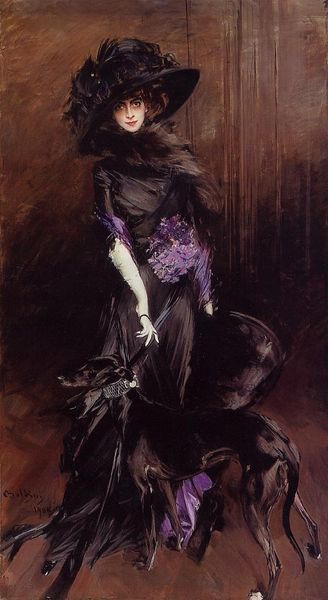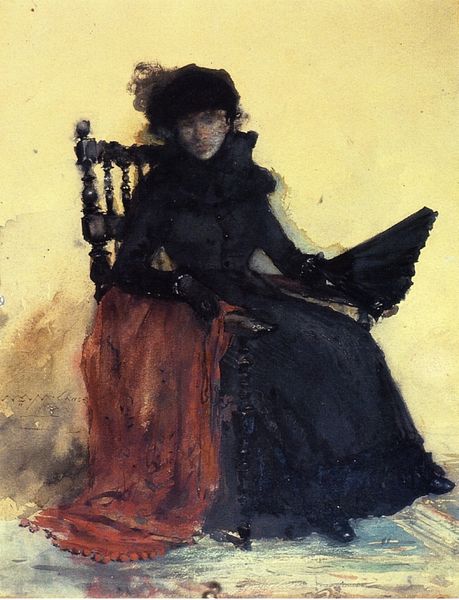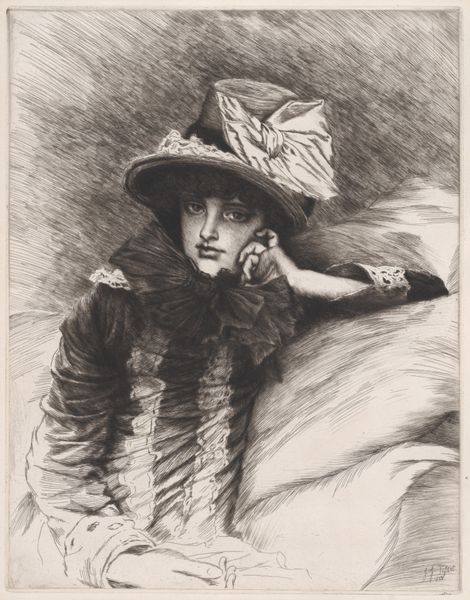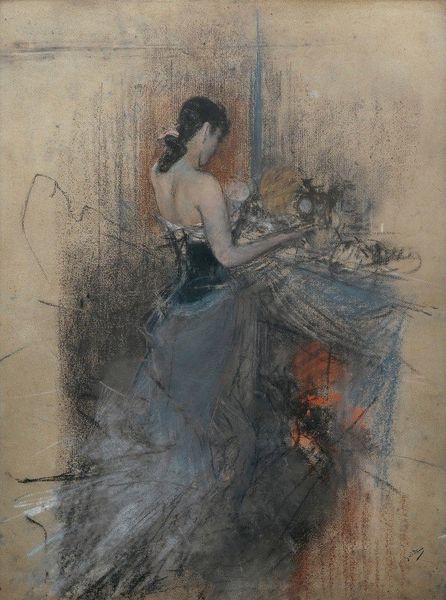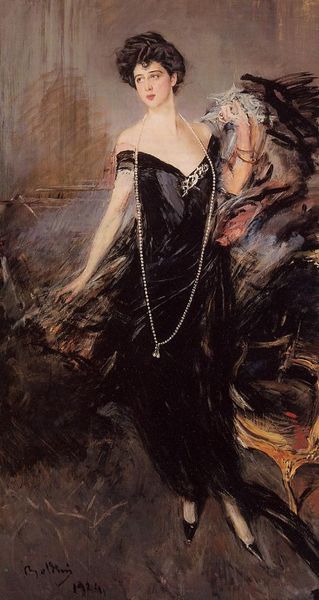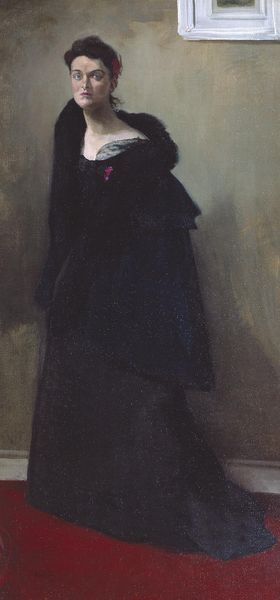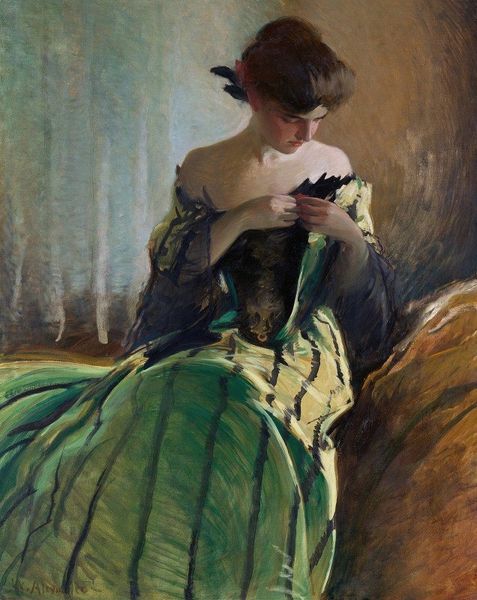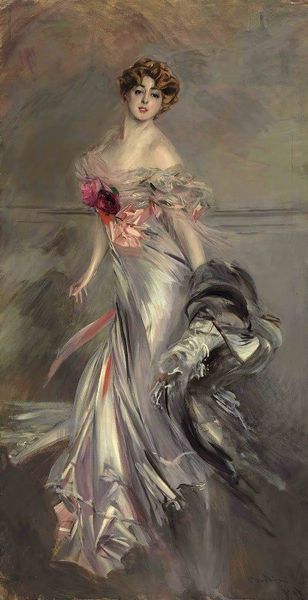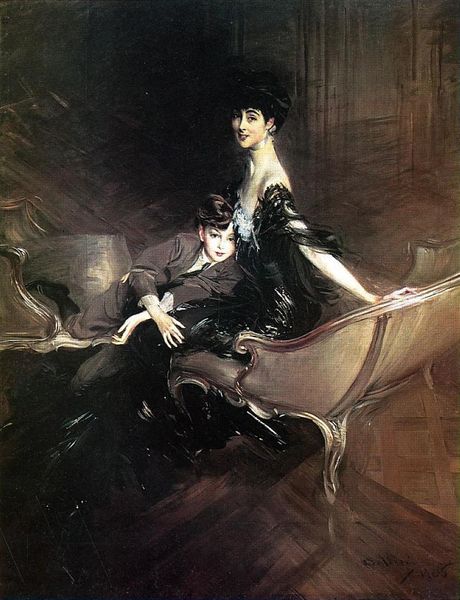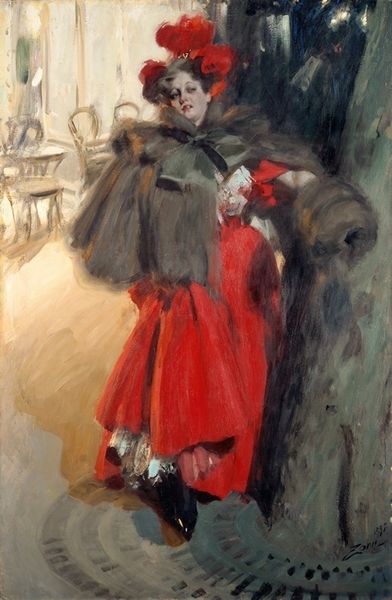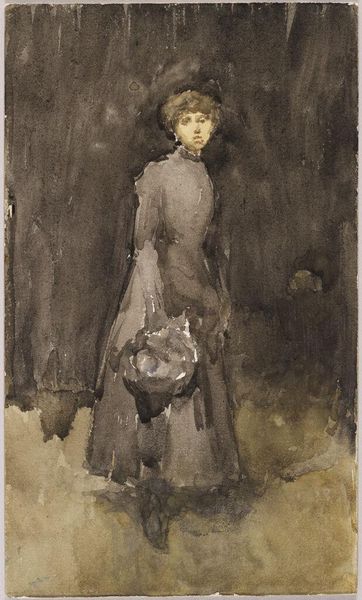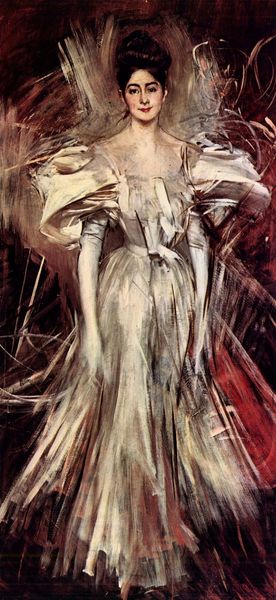
Dimensions: 50 x 36 cm
Copyright: Public domain
Editor: This is Giovanni Boldini’s “The Divine in Blue,” painted around 1905. It's oil on canvas. The dominating blue and the figure's somewhat concealed face create this atmosphere of mystery... Almost like a secret. What do you see in this piece? Curator: Boldini, a master of the Belle Époque, captures more than just a portrait. He’s presenting a societal performance. Notice how the woman is adorned. What do these choices signify in the context of early 20th-century gender expectations? Editor: Well, the elaborate hat, the dress… it screams wealth and status. Almost like she is playing a role, an idealized feminine figure. But is that all? Curator: Precisely! But let's delve deeper. Boldini’s loose brushstrokes, almost bordering on abstraction, seem to intentionally disrupt that ideal. Is he critiquing the very societal structures that elevate this woman? What does that blue signify? It overwhelms and almost erases the subject… Editor: I never thought about it that way, but it makes sense! The brushstrokes really do convey a kind of tension, as though the painting itself struggles with these societal roles. The colour now gives an idea of something looming, not just opulence. Curator: The erasure I mentioned points at historical dynamics of power, who has visibility and who does not. Who is being framed and objectified, who remains outside? Editor: That's really fascinating. So it’s not just a portrait, but also a commentary on gender, class, and representation during that period. It gives so much food for thought! Curator: Absolutely. Art, at its most profound, reflects and refracts the complexities of its time.
Comments
No comments
Be the first to comment and join the conversation on the ultimate creative platform.
